Posts
Contact
Lisa Davis
Program Associate-Leadership
Phone: 501-671-2260
Email: ldavis@uada.edu
University of Arkansas System Division of Agriculture
Cooperative Extension Service
2301 S. University Avenue
Little Rock, AR 72204
LeadAR Class 20-Local Foods, Art, and All Things Chicken
We attended the final LeadAR session for the year 2023 in northwest Arkansas with the theme “Agriculture - Livestock, Poultry and Local Food." The first day of the seminar focused on regional food systems and art while the second day focused on the poultry industry.
Day One - by Dan Villamor
Arkansas is known for its row crops, primarily rice, soybean and cotton with large acreages dedicated to these cropping systems all over the state except in northwest Arkansas (NWA). Yet small and med-sized farmers, primarily focused on growing vegetables and fruits, are thriving in NWA with the assistance of NWA Food Systems.
NWA Food Systems envisions to “position the region as a national model for local food and regenerative agriculture, support local economies and provide healthy food access for all." This is accomplished through a network of organizations such as the Center for Arkansas Farms and Food (CAFF), Spring Creek Food Hub, and Northwest Arkansas Land Trust.
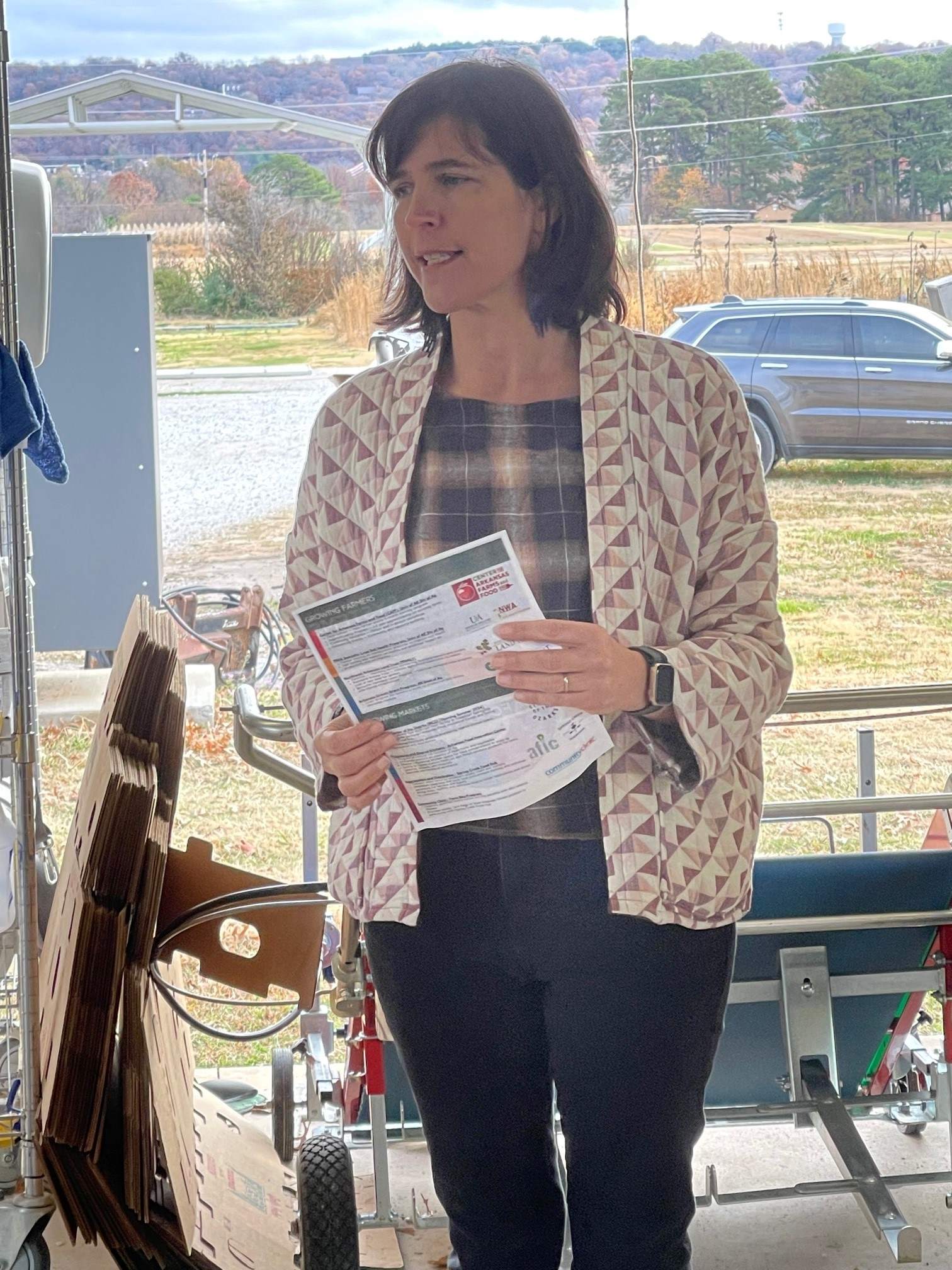 LeadAR Class 20 members started out Day One by meeting with key personnel from these
organizations, who shared how this system of farming works. Heather Friedrich, director
of CAFF, provided an overview of the vision and goals of her organization. Among other
things, she explained how the center teaches next generation farmers through a training
program called The Farm School, an 11-month onsite program for new farmers, and a
1–2-year Apprenticeship Program on existing farms.
LeadAR Class 20 members started out Day One by meeting with key personnel from these
organizations, who shared how this system of farming works. Heather Friedrich, director
of CAFF, provided an overview of the vision and goals of her organization. Among other
things, she explained how the center teaches next generation farmers through a training
program called The Farm School, an 11-month onsite program for new farmers, and a
1–2-year Apprenticeship Program on existing farms.
Anthony Mirisciotta, the executive director of Spring Creek Food Hub, explained how the organization connects local farmers to existing and new markets. Access to agricultural land is increasingly becoming difficult because of rising costs, but through the Northwest Arkansas Land Trust, farming in the region remains a viable venture.
Susan Koehler, the organization’s farmland preservation manager and a LeadAR alum
(Class 19),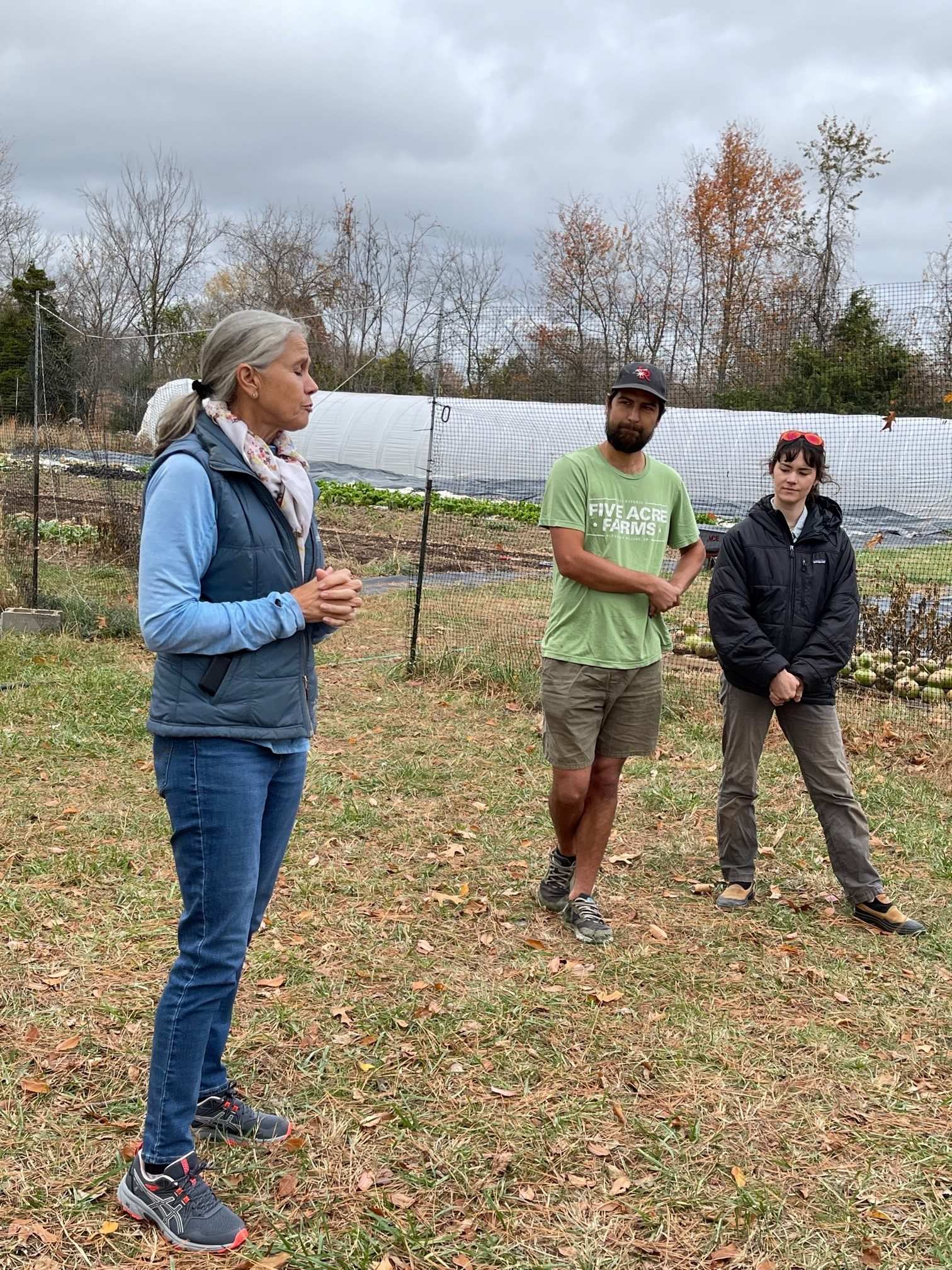 shared how farmers gain access to farmland and preservation programs. She further
added that not only small acreages are available for lease to farmers but also mid-size
acreages up to 25 acres, with an option of lease to own in this farm size.
shared how farmers gain access to farmland and preservation programs. She further
added that not only small acreages are available for lease to farmers but also mid-size
acreages up to 25 acres, with an option of lease to own in this farm size.
An interesting piece of information worth mentioning is the indirect support to local farmers through the Community Clinic in NWA. Amanda Echegoyen, the clinic's chief operating officer, explained a holistic approach of healthcare through the Veggie Prescription Rx and box subscription programs. To combat chronic illnesses such as diabetes and hypertension, Echegoyen said patients receive counsel about lifestyle change in eating habits to manage these diseases. Furthermore, as patients leave the clinic, they not only receive their prescription medications but also a box of locally grown vegetables and fruits.
Travel to one of the small-sized farms showcased the NWA Food Systems in action. With agricultural land leased through the Northwest Arkansas Land Trust, Daniel and Chloe Evans started farming in NWA at the historic Woolsey Farm only in January of this year. Their farm, named Honest Dirt Farm, has a half-acre vegetable production but a plan to increase acreage next growing season is already in place with a foresight of growing small fruits in the future. Their produce is marketed through Spring Creek Food Hub, Ozark Natural Foods, and the farmers market in Fayetteville.
Members of the LeadAR Class 20 were then introduced to the concept of "agrihood" through a visit to the Red Barn Farm in Bentonville. "Agrihood" refers to placing a miniature farm within a subdivision or multifamily community instead of recreational facilities. It was fascinating to see this concept applied in real time. With approximately two acres of largely vegetable production, Red Barn Farm primarily caters to people living in Red Barn Apartments and Townhouses. The farm has a few personnel (a farm manager, farm coordinator, and two full apprentices) but is sustained by volunteers living in the community and those nearby. The benefit of a volunteer is that you get fruits of your labor by being able to bring some produce and learn hands on agriculture. Overall, this concept is impressive. The only caveat, at least objectively, is affordability. But then, perhaps this may change in the future.
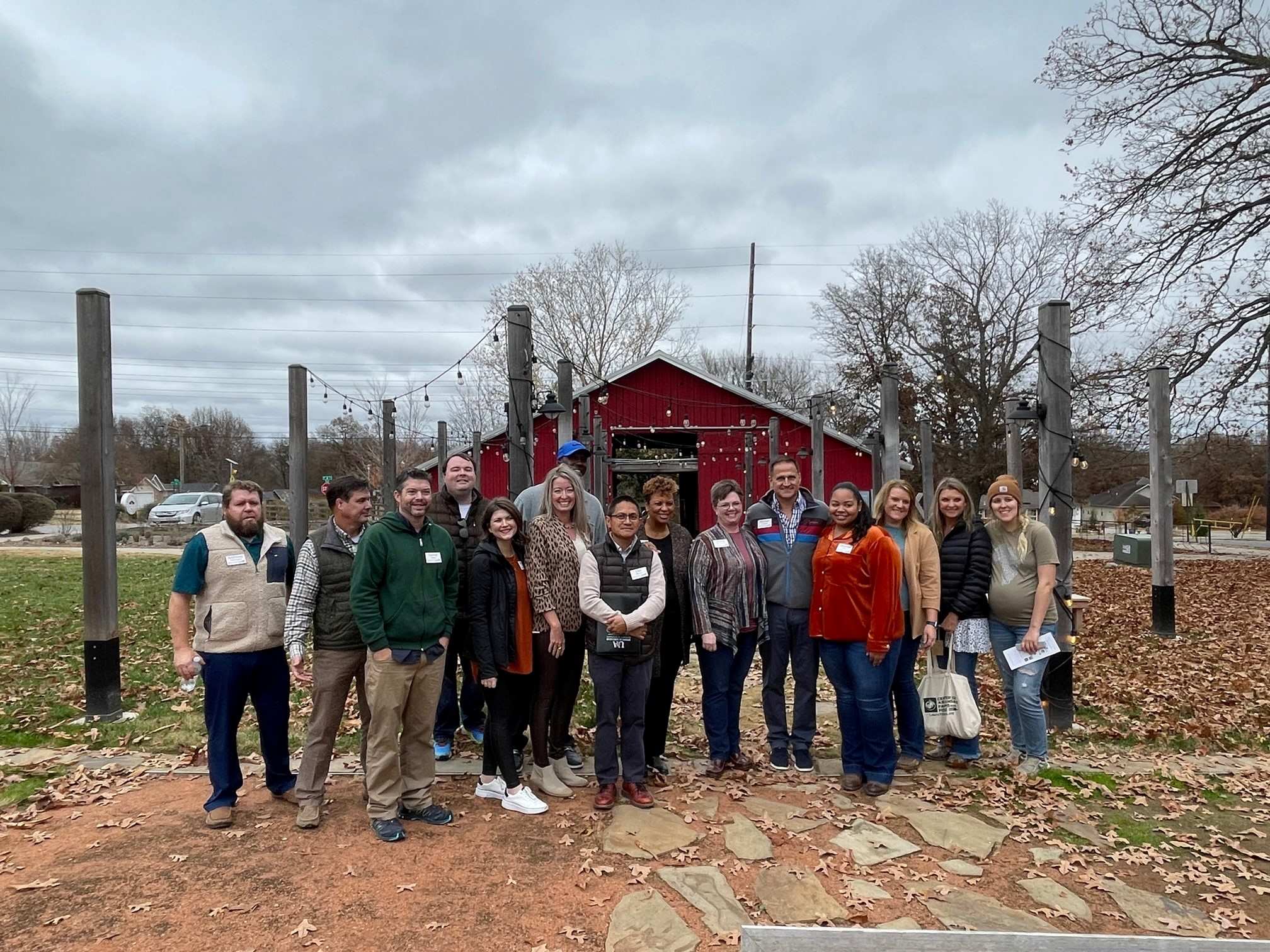
After a stop at Crepes Paulette for lunch, LeadAR Class 20 members got a taste of Bentonville's art at Crystal Bridges Museum of American Art. We were greeted with a hospitable atmosphere by Ayanna Bledsoe, Megan Davenport, and Katie Doyle, and were given complimentary tickets to the art gallery of Annie Leibovitz and Listening Forest exhibit.
Our first stop was with Samantha Best who gave a talk on the intersections between nature, wellness, art, and agriculture. She provided an insightful presentation on how we can adjust and fine tune our leadership skills by observing what we see in nature. Best provided several examples but one that was particularly profound was her analogy of the behavior of trees with respect to the wind; that is to say, as trees bend with the wind, so we must do the same to have that flexibility to work in a team environment.
This was followed by a conversation about diversity, equity, accessibility and inclusion (DEAI) with Ayanna Bledsoe, the Director of Inclusion and Belonging in Crystal Bridges Museum, along with other staff members. Of the many things that were discussed about this topic, it was explained by Ayanna that the DEAI Museum policy was created to push, expand, and define art to introduce different groups of people to arts and culture. The goal is to initiate dialogue and ultimately build relationships with one another.
Afterwards, we all had the opportunity to look at various art galleries in the museum, one of which was the gallery of renowned Annie Leibovitz. We stayed for dinner at Crystal Bridges Eleven Restaurant & Coffee Bar for a full course meal and chatted with each other, and with some LeadAR alumni and staff members of the museum, particularly with Jordan Poorman Cocker, who is the curator of indigenous art.
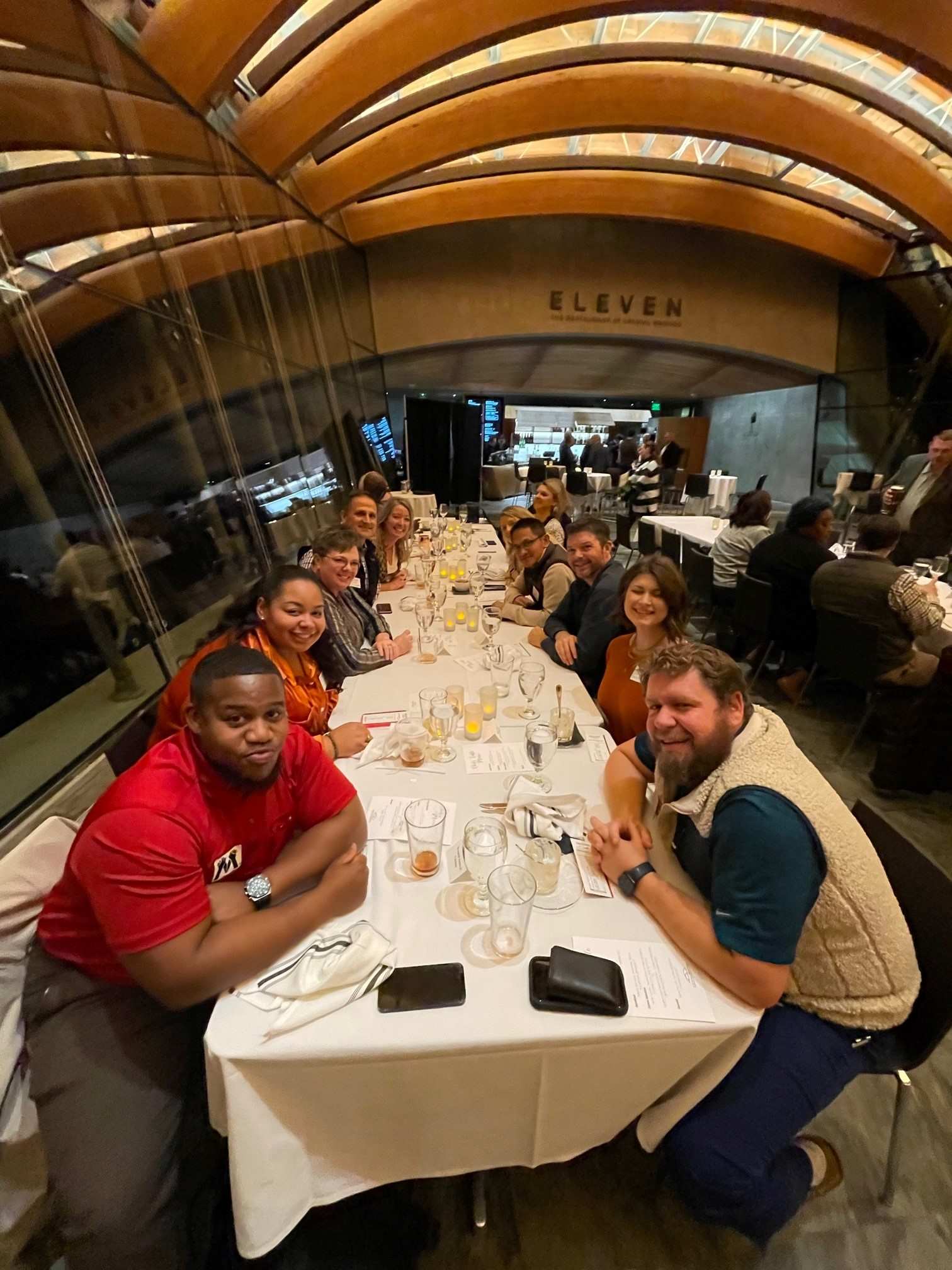 The day was capped off, that is to say before leaving the museum and going back to
the hotel, with an adventure through the Listening Forest exhibit. This was indeed
a unique and astonishing experience, with one that arguably stood out the most was
the “Summon” installation. If I had to go back to the “Summon," I would definitely
check and see if there is one that can beat the sound of “Tarzan”.
The day was capped off, that is to say before leaving the museum and going back to
the hotel, with an adventure through the Listening Forest exhibit. This was indeed
a unique and astonishing experience, with one that arguably stood out the most was
the “Summon” installation. If I had to go back to the “Summon," I would definitely
check and see if there is one that can beat the sound of “Tarzan”.
Day Two - by Michael Mangrum
After getting up and readying myself for the day, I ventured to the lobby where I
met a few other classmates and we all agreed on one thing: What an honor it was being
able to meet a LeadAR alum the night before. Mrs. Marvelle Stines from Class 7. What
an amazing lady. Full of life and full of stories!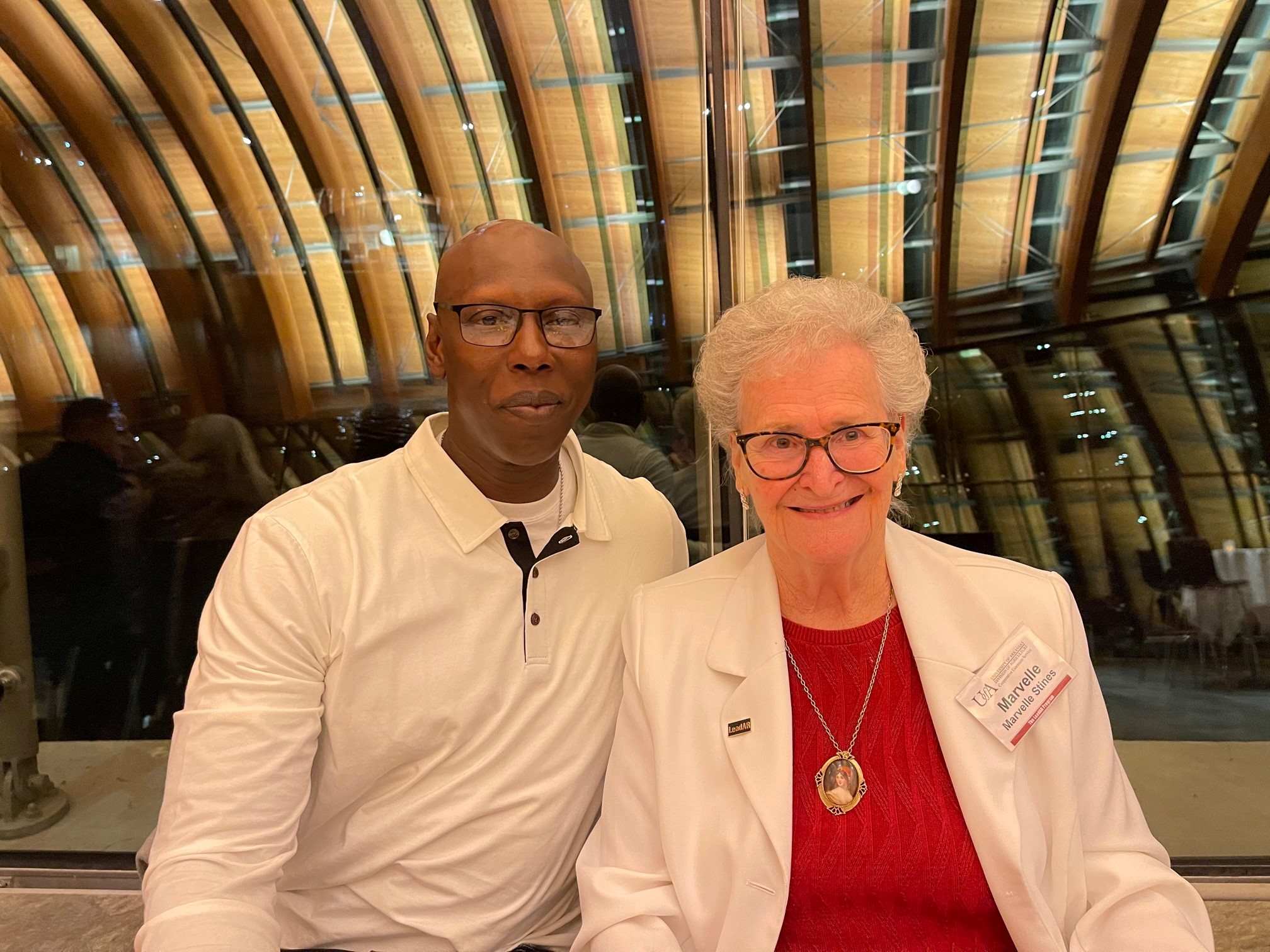
Next we traveled to Simmons Prepared Foods in Gentry. There we met up with Dr. David Caldwell. He is the department head, professor and director of the Center of Excellence for Poultry Science at the University of Arkansas. He arranged the tour of the Simmons facility.
Simmons representatives Mark Weathers and Brad Elam talked about the Simmons facility and informed us of many interesting facts, such as:
- Simmons supplies a farmer with chickens, feed and support. The farmer supplies chicken houses, utilities and grows the birds.
- Birds have a target weight of 8.65lbs to 9lbs reaching this goal in 56 to 58 days.
- Farms contracted at this facility consume 15,000 tons of food a week. That's 630 acres of corn and 250 acres of soybeans per week.
- The facility is 315,000 square feet in size and employs 1,300 people.
- 3,600 to 3,800 birds arrive in each truck.
- Three lines run to unload the trucks.
- 420 birds can be processed per minute!
- It takes 3 hours from when a bird arrives until it reaches the cutting line.
- 99% of the bird is used. Byproducts, including intestines and feathers, are turned back into protein and used mainly in pet food.
- Water management is a huge issue and carefully watched. 4 to 6 gallons of water are used for every bird processed. Over 1 million gallons of water is used per day. The water is reused, treated, then sent to another water processing facility and treated again.
- After the birds are processed they are sold to other companies including Raising Cains, Popeyes, Buffalo Wild Wings, just to name a few. The company was founded in 1949. Every package processed and sent out has a P1949 on its label to specify it is from the Simmons facility.
- The biggest myths of the poultry industry include the use of steroids, hormones, and testosterone. All are false and never used. The USDA inspects every bird.
- Every hour 10 birds are pulled for deeper inspections. The highest of standards are maintained.
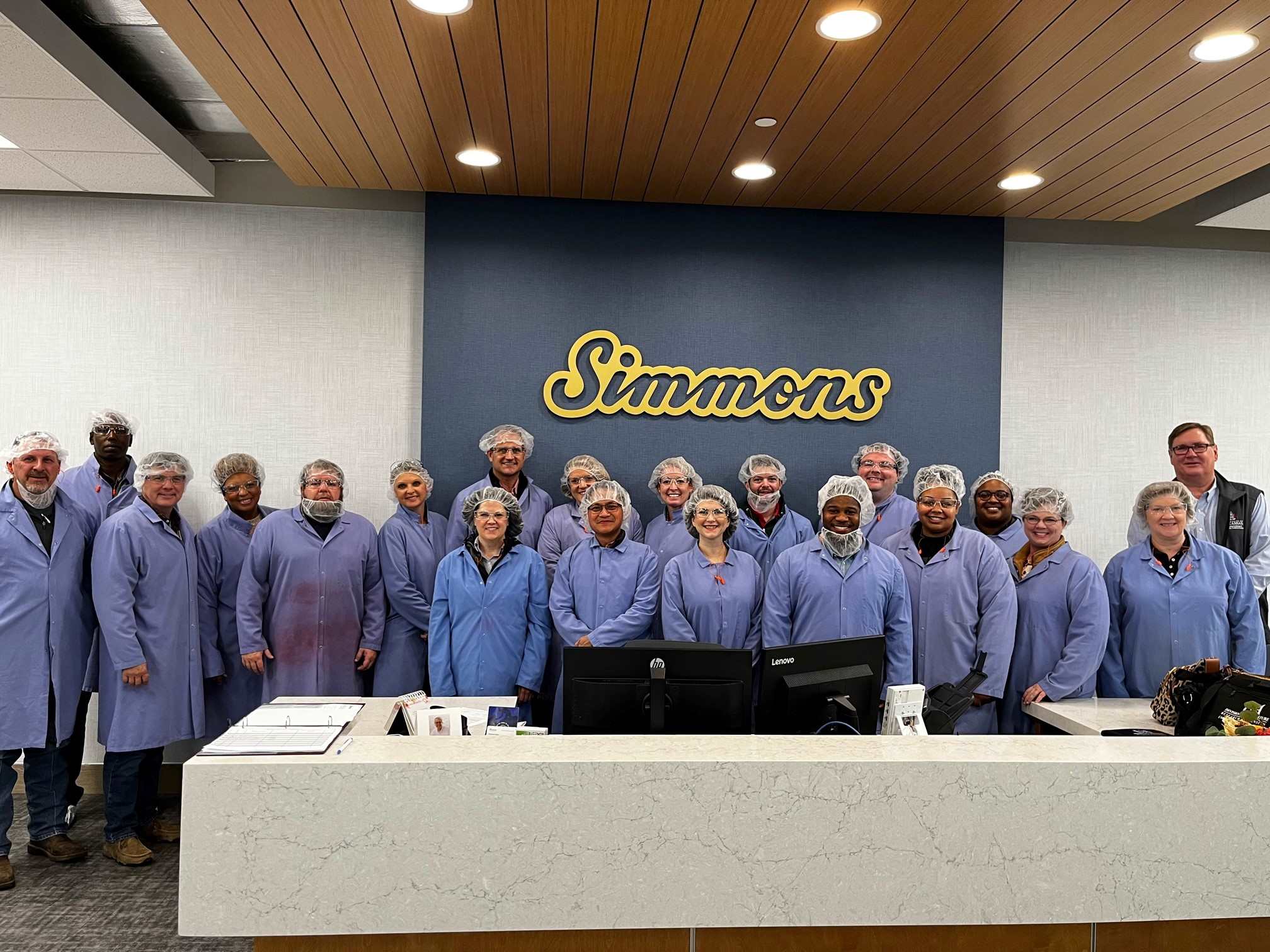
We turned in our lab coats, safety glasses and hairnets and traveled south to Elkins and had a wonderful lunch at the Tequila Bar and Grill. We then traveled to the poultry and cattle farm of Jeff Marley. We met with him and two other poultry farmers, Aaron Holcomb and Greg Wheeler.
They discussed in dept the pros and cons of raising chickens. Many things were learned including:
- Pullet: a young female chicken used in the production of eggs.
- Broiler: chickens raised specifically for meat production.
- Cornish hen: same as broiler but only raised until it reaches a smaller weight and size.
- Most chicken farms have an average of 6 houses that are usually 240,000 square feet in size.
- One chicken house can consume 5,000 gallons of water per day.
- Chicken houses are a very controlled environment. Temperature, feed and water can all be adjusted to adapt to any condition.
After this tour we debriefed, said our goodbyes and each headed to our own part of the state. Reflecting back on the people we met and all the information we acquired ready for the next LeadAR seminar!